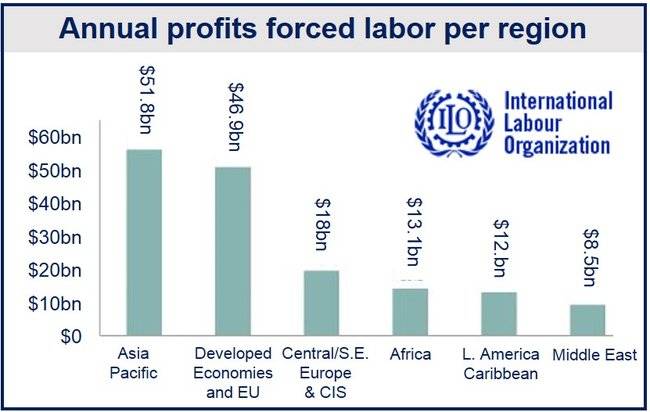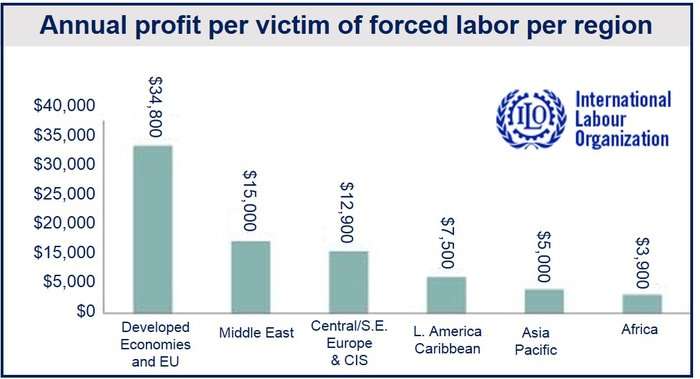Forced labor, which includes commercial sexual exploitation, domestic and agricultural work, mining, as well as some other economic activities, generates $150 billion in illegal profits annually, says the International Labour Organization (ILO).
In its new report – Profits and Poverty: The Economics of Forced Labor – the ILO states that its estimate is three times more than previously thought.
The authors said two-thirds of the total, approximately $99 billion, came from agricultural and domestic work, sexual exploitation, and mining.
Forced labor bad for business
ILO Director-General Guy Ryder, said:
“This new report takes our understanding of trafficking, forced labor and modern slavery to a new level. Forced labor is bad for business and development and especially for its victims.”
“Our new report adds new urgency to our efforts to eradicate this fundamentally evil, but hugely profitable practice as soon as possible.”
The new total is based on 2012 data the ILO had published, in which 21 million people were estimated to be involved in modern slavery, forced labor and trafficking.
(Source: ILO)
Many females in forced labor
Over half of all the people involved in forced labor are female – women and girls – mainly in domestic work and commercial sexual exploitation. Males – men and boys – are mainly involved in forced exploitation in mining, construction and agriculture.
The illegal profits generated by forced economic exploitation are as follows:
- $34 billion: in mining, manufacturing, construction and utilities.
- $9 billion: in agriculture, including fishing and forestry.
- $8 billion: the amount saved in private households by either not paying or underpaying domestic workers who are held in forced labor.
(Source: ILO)
What pushes people into forced labor?
Income shocks and poverty are the principal economic factors that drive people into forced labor. Other contributory factors include illiteracy, lack of education, migration and gender.
Beate Andrees, head of the ILO’s Special Action Program to Combat Forced Labor, said:
“While progress is being made in reducing state-imposed forced labour, we must now focus on the socio-economic factors that make people vulnerable to forced labour in the private sector.”
Andrees is urging government, agencies and other organizations to implement or encourage a range of measures aimed at reducing vulnerability to forced labor, including:
- Raising social protection floors so that people are less likely to be victims of abusive lending or indenture should they experience income shocks.
- More investment in education and skills training so that vulnerable workers have better job opportunities.
- Encouraging a rights-based approach to migration so that migrant workers are less susceptible to irregular employment and abuse.
- Supporting the organization of workers, especially in industries and sectors where forced labor is common.
Mr. Ryder said:
“If we want to make a significant change in the lives of the 21 million men, women and children in forced labour, we need to take concrete and immediate action. That means working with governments to strengthen law, policy and enforcement, with employers to strengthen their due diligence against forced labour, including in their supply chains, and with trade unions to represent and empower those at risk.”



